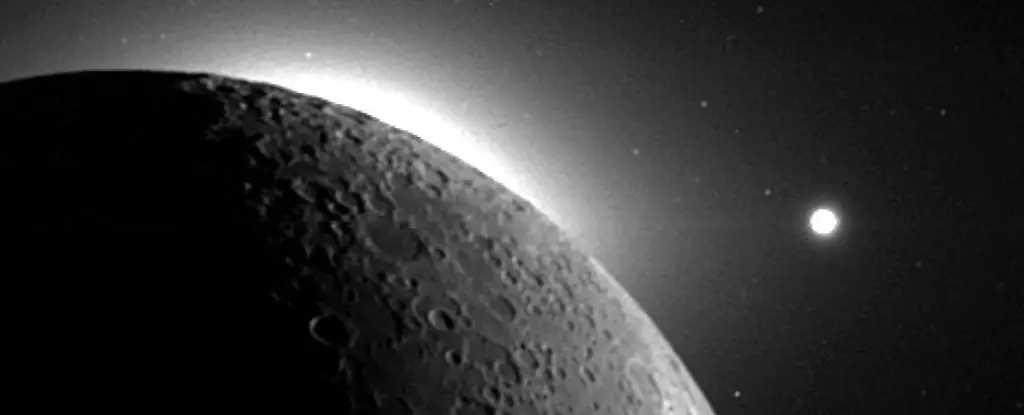The Earth and its Moon share a relationship that remains an enigma within the realm of planetary science. Unlike other celestial bodies in our Solar System, where planets frequently possess either numerous moons or none at all, the Earth-Moon dynamic is unique due to the notable mass ratio between the two. This relationship prompts an array of questions about the origins of the Moon and its implications for our understanding of planetary evolution. Various theories exist surrounding the origin of our Moon, primarily focusing on whether it was formed alongside Earth or if it was acquired through gravitational capture from elsewhere. Recent research introduces an intriguing alternative hypothesis: the Moon may have adopted into Earth’s orbit, suggesting a complexity to its genesis that challenges long-held beliefs.
For decades, the Giant Impact Hypothesis dominated discussions about the Moon’s origins. According to this theory, a colossal object collided with the early Earth, ejecting debris that eventually coalesced into the Moon. Such a scenario would explain the mineralogical similarities observed between the Earth and the Moon, as they would share a common source of material. However, emerging research by astronomers like Darren Williams and Michael Zugger posits that the Moon might have a more convoluted heritage. Instead of being a direct offspring of Earth, it could be considered an adopted body, formed in a different region of the Solar System and subsequently captured by Earth’s gravitational pull.
This proposition is fascinating because it opens the door for considering various moon-acquisition mechanisms. In addition to the Giant Impact Hypothesis, it broadens the dialogue to include phenomena such as binary capture, where a passing celestial body disrupts existing gravitational relationships. Delving into this new perspective invites questions about how common such captures might be and whether other planetary systems could exhibit similar traits.
The notion of gravitational capture implies a more dynamic interplay of celestial bodies than previously understood. Williams and Zugger’s research illuminates one specific scenario called binary capture. This process occurs when two celestial bodies in a mutual gravitational bond encounter a third body; the third body may snare one of the original duo while leaving the other behind. The generalization of this mechanism reveals implications beyond our immediate Solar System, hinting at how moons could form around distant exoplanets through similar gravitational interactions.
Evidence for these dynamics exists within our Solar System. For instance, Triton, Neptune’s largest moon, orbits the planet in an unusual manner. Its retrograde motion and distinct inclination suggest it was seized from the Kuiper Belt rather than forming in situ. If Triton can offer insight into the complex gravitational play of celestial bodies, then surely the Earth-Moon system warrants a closer examination through this broader lens of capture dynamics.
The recent findings by Williams and Zugger point to significant implications regarding our understanding of the Earth-Moon relationship. By employing mathematical modeling, they postulated that Earth could potentially capture a body comparable in size to the Moon—though the likelihood of such an event remains speculative. Nonetheless, their calculations reveal that a celestial body the size of the Moon could achieve a stable orbit around Earth, providing a compelling argument for capture over formation.
However, it is essential to strike a balance when considering these models. While the gravitational capture hypothesis introduces new avenues for inquiry, the core issue of mineral and isotopic similarities between Earth and the Moon remains a fundamental hurdle for this theory. Currently, these properties confer greater credence to the idea of a shared origin rather than a scenario where the Moon was a foreign body adopted later.
The ongoing investigation into the Earth-Moon relationship not only deepens our understanding of our own planetary system but also assists in projecting how such systems may evolve around other stars. As researchers refine their understanding of moon genesis through possibilities like capture mechanisms, they may unravel patterns that extend far beyond our Solar System.
The Moon’s role in stabilizing Earth’s axial tilt and influencing ocean tides could point researchers toward identifying other habitable exoplanets. Discovering similar moon systems across the galaxy could yield tantalizing insights into potential life-supporting environments on distant worlds, hence possibly enriching the search for extraterrestrial life.
The ongoing debates surrounding the origins of the Earth and Moon reflect the complexity of planetary evolution. While the Giant Impact Hypothesis has long held sway, recent explorations into gravitational capture have introduced a new dimension to our understanding of celestial relationships. With research evolving, astronomers remain cautiously optimistic that by peeling back the layers of the Moon’s enigmatic nature, they can glean essential insights applicable not just to our own planet but the cosmos at large. Today, the question of how our Moon came to be isn’t simply about answering a cosmic riddle; it’s about unraveling the very fabric of planetary systems throughout the universe.


Leave a Reply